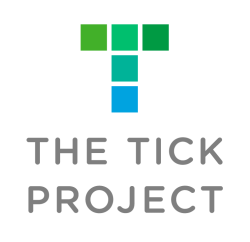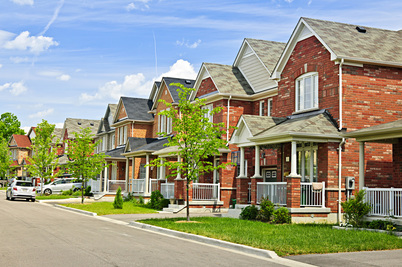Who participated in this study?
In this study, we treated entire neighborhoods. We chose neighborhoods that had a relatively high number of Lyme disease cases.
The neighborhoods were located throughout Dutchess County. Each neighborhood contained about 100 households and covered 6-10 square blocks. For a neighborhood to be included in the study, many of the residents of the neighborhood had to agree to participate. |
What happened to the properties in a neighborhood?
Every property in the study received Tick Control System (TCS)® bait boxes and Met52® spray, but in some neighborhoods, the bait boxes and spray did not contain the active ingredients. Inactive TCS® bait boxes look the same as the active boxes, but they do not contain the chemical that kills ticks. Inactive Met52® spray is just water that does not contain the fungal spores that kill ticks.
The neighborhoods were divided into four groups, each of which received one of these combinations of spray and bait boxes:
All of the participating properties in a neighborhood received the same treatment.
The neighborhoods were divided into four groups, each of which received one of these combinations of spray and bait boxes:
- Active Met52® spray and active TCS® bait boxes
- Active Met52® spray and inactive TCS® bait boxes
- Inactive Met52® spray (water) and active TCS® bait boxes
- Inactive Met52® spray (water) and inactive TCS® bait boxes
All of the participating properties in a neighborhood received the same treatment.
Why were some neighborhoods treated with inactive ingredients?
In this study, we used the gold standards for scientific research. One of these standards is to control for the "placebo effect", which occurs when people behave differently because they know which treatment group they are in. For this reason, we made sure that people participating in the study were not able to tell which treatment group they were in. In fact, no one collecting data for the study knew which neighborhood was receiving which treatment.
What data were collected during this study?
We collected three major kinds of data in this study, and used these data to find out which, if any, of the four kinds of treatments had a significant effect on the number of ticks, tick bites, or cases of tick-borne diseases in the neighborhoods.
Reporting by participantsThroughout the tick season, people participating in the study reported diagnosed cases of tick-borne disease, as well as encounters with ticks on themselves and their pets.
|
Tick collection by biologistsOur crews sampled ticks on properties and conducted lab analyses to measure the number of ticks in each neighborhood and whether they were carrying pathogens.
|
Surveillance by healthcare providersLocal doctors and other health care professionals monitored cases of tick-borne diseases to determine whether the two methods reduced the incidence of disease in neighborhoods.
|
|


